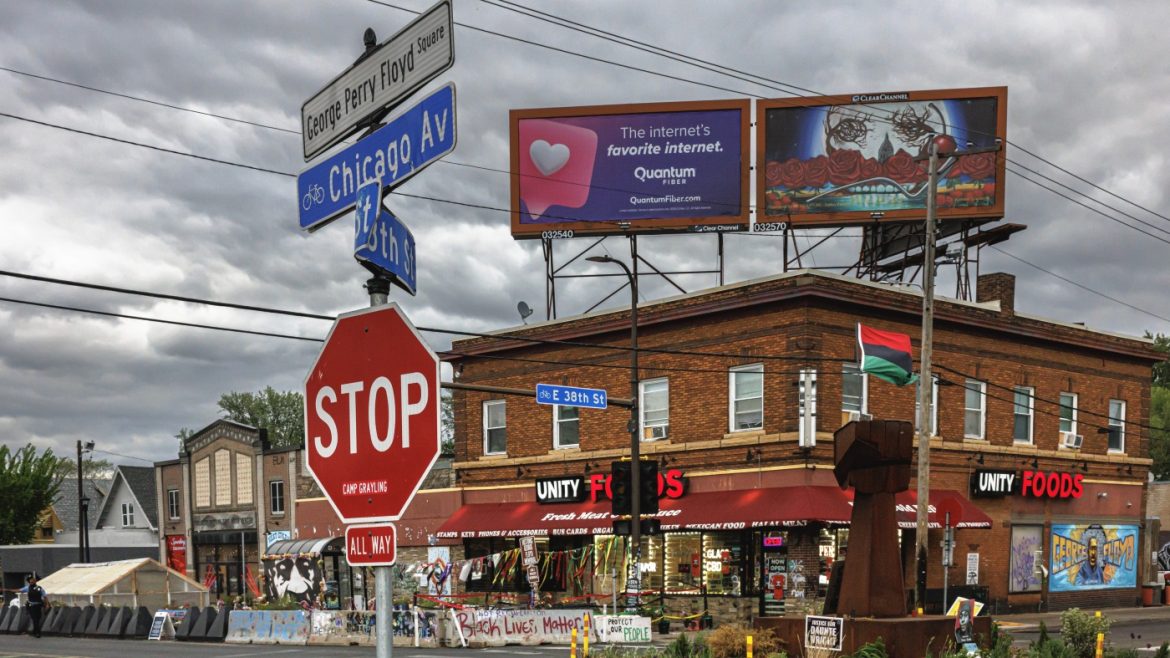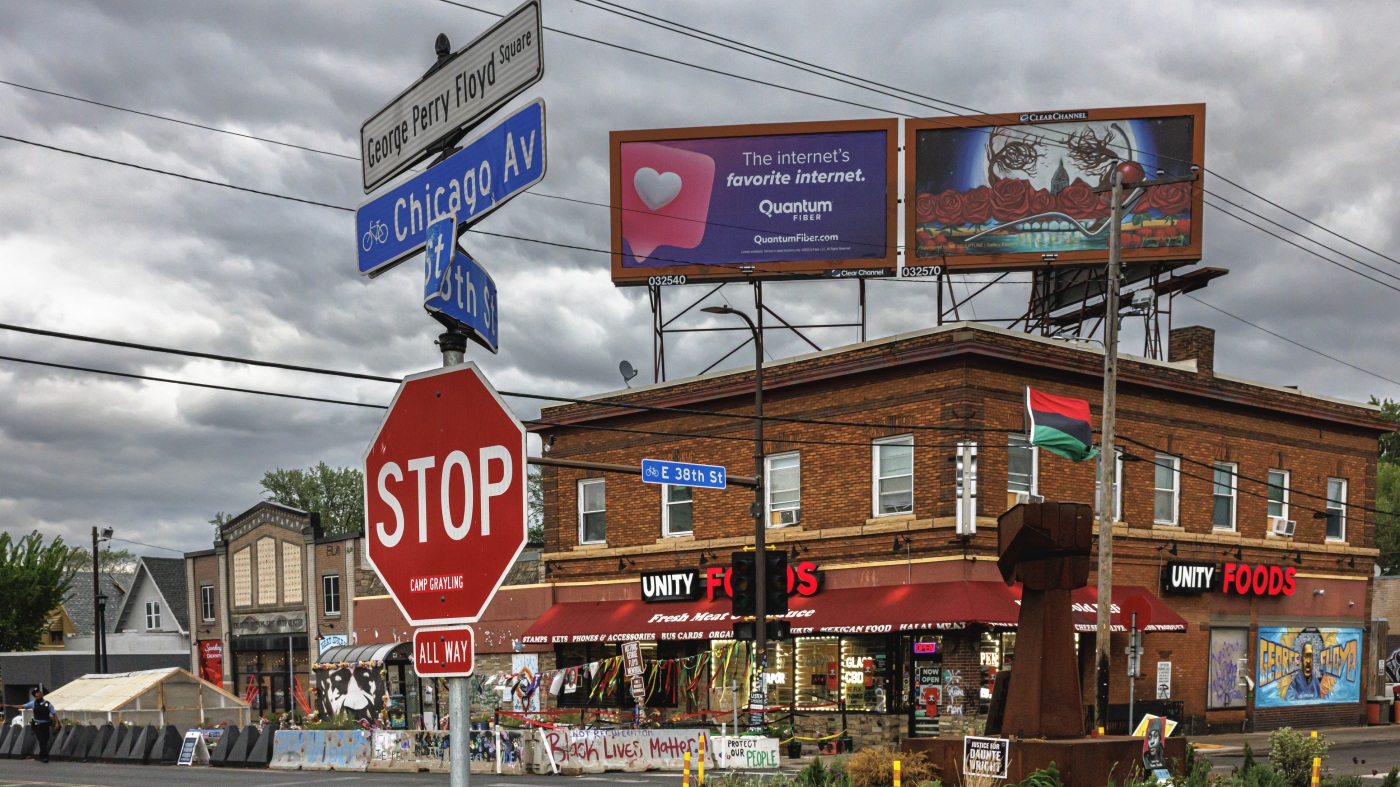The Future of George Floyd Square: A Complex Crossroads of Memory, Community, and Urban Development
—
Introduction: A Site of National Significance and Local Debate
Five years after the tragic killing of George Floyd transformed the intersection at 38th and Chicago into a global symbol for racial justice and police reform, the future of George Floyd Square remains a subject of passionate discussion and dispute. This location, which quickly evolved from a site of mourning and protest into a quasi-autonomous zone, challenging traditional notions of public space, now stands at a pivotal moment. City officials, community members, business owners, and activists are grappling with how to honor Floyd’s legacy while addressing the competing needs of the neighborhood and the city at large.
—
Origins and Transformation of George Floyd Square
Initially, after Floyd’s death on May 25, 2020, the corner became an informal memorial and protest site. Barricades were erected, and the community took stewardship over the space, converting it into a dense mosaic of artwork, altars, and statements demanding justice. This self-policed zone — at times described as a semi-autonomous zone or “People’s Way” — fostered a unique social experiment: a grassroots-driven public area that prioritized community safety, cultural expression, and activism over traditional policing and vehicular traffic.
Visitors from around the world came to witness the evolving memorial. It became simultaneously a tourist destination and a hub for community organizing, mutual aid, housing support for the homeless, and public health initiatives. This organic development emphasized that Floyd’s death was not just a singular tragedy but a catalyst for systemic change.
—
Divisions and Challenges: Community Voices and City Perspectives
As time passed, the question of permanent management and development for the square became unavoidable. The neighborhood remains sharply divided about the square’s future use:
– Local Residents and Activists: Many continue to view George Floyd Square as a sacred protest space that should prioritize pedestrian access, public art, and community programs. They emphasize the importance of preserving the symbolic power of the site and maintaining a level of community control over its use. Some fear that formal redevelopment or reopening to full car traffic could dilute the memorial’s meaning or lead to displacement through gentrification.
– Business Owners and City Officials: On the other side, there are calls for reopening the intersection to vehicle traffic to rejuvenate local businesses and improve accessibility. City leaders have highlighted infrastructure needs, including improved sidewalks, lighting, and landscaping, to transform the area into a permanent memorial and community space but also want to balance economic development goals. The city has proposed timelines for construction work starting in 2025, with input phases ongoing since late 2023.
Polls and surveys show a split among residents and stakeholders. The passions on both sides point to a broader tension between preserving historical memory and ensuring functional urban development that supports livelihoods.
—
Community Engagement and Visioning Efforts
In response to these tensions, the City of Minneapolis has initiated extensive community engagement frameworks aimed at developing a collaborative vision for the space. These efforts seek to include a wide cross-section of voices—residents, activists, business owners, and others—to negotiate competing interests.
Some key initiatives include:
– Public forums and dinners at local community centers to spark dialogue.
– Solicitation of redevelopment proposals for specific parcels, such as the site formerly occupied by a Speedway gas station, envisioned as a community hub.
– Ongoing discussions about the square’s ownership, permanent use, and the integration of public art that reflects community narratives.
Despite the challenges, these processes reflect an attempt to democratically shape the square’s future while honoring its history.
—
Physical Redesign and Memorialization Plans
City plans envisions a redesign that includes:
– A pedestrian plaza emphasizing walkability and gathering spaces.
– Permanent memorial installations incorporating the artwork and symbolism that have come to define the space.
– Safety measures and infrastructure improvements that respect community input and minimize disruption.
However, construction is not expected to begin until at least 2026, after extensive planning and consensus-building. The delay has frustrated some advocates who want quicker action to secure justice demands and neighborhood investments, while others worry that rushed redevelopment risks community alienation.
—
Socioeconomic Implications: Displacement and Equity Concerns
A vital aspect of the debate concerns fears of displacement. The increased attention and potential redevelopment have raised concerns about rising property values and the risk that long-time residents and culturally significant spaces might be pushed out. This challenge is emblematic of many urban neighborhoods facing similar crossroads amid national conversations on racial equity and economic justice.
Activists argue that genuine justice linked to Floyd’s legacy must extend beyond the physical space. They seek policies that ensure affordable housing, job creation, and sustained community control as foundational components of the square’s future.
—
The Site as a Living Memorial and Political Symbol
George Floyd Square is not just a location; it is a continuing political and cultural statement. The square encapsulates broader struggles over policing, racial injustice, and the right to public space. Its future development must therefore reckon with these layers of meaning, balancing between a static monument and a living site of activism.
Community-led events continue to mark anniversaries, foster education, and sustain dialogues that resist erasure or co-optation. The square exemplifies how urban spaces can function as arenas of collective memory and ongoing social movement.
—
Conclusion: Navigating a Shared but Contested Future
The path forward for George Floyd Square reflects a crucial intersection—figuratively and literally—between memory, community identity, justice, and urban renewal. Its future remains unsettled, mirroring the national reckoning it symbolizes.
Creating a lasting legacy for George Floyd Square demands attentive, inclusive dialogue that respects the powerful narratives enshrined there, integrates diverse community needs, and promotes equity. As Minneapolis and its residents engage in this complex process, the square stands as a potent reminder of both the progress achieved and the unfinished work ahead in the quest for justice and communal healing.


